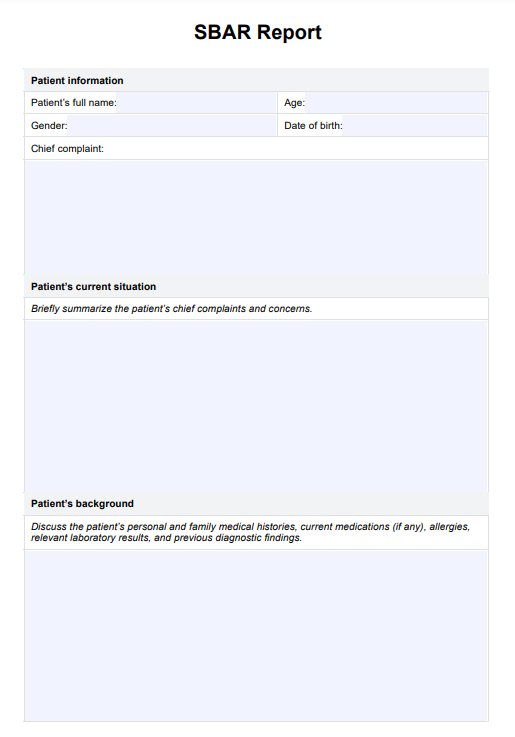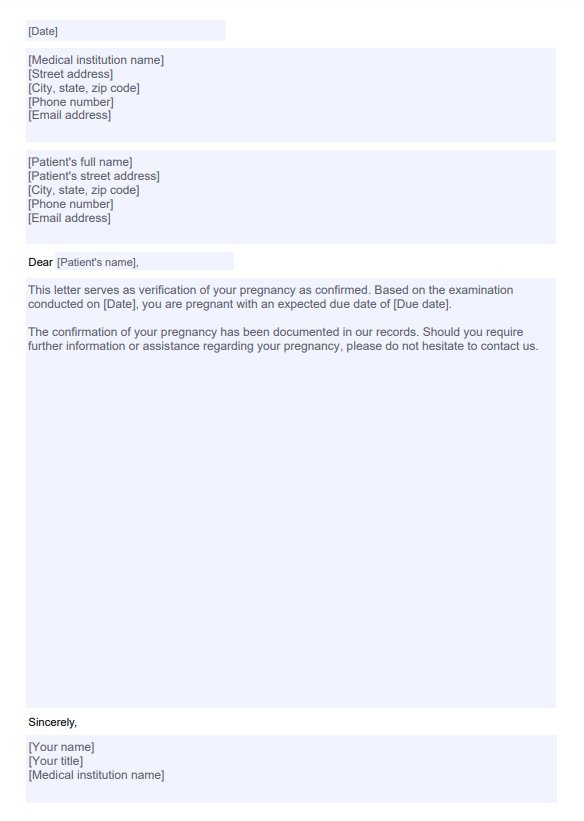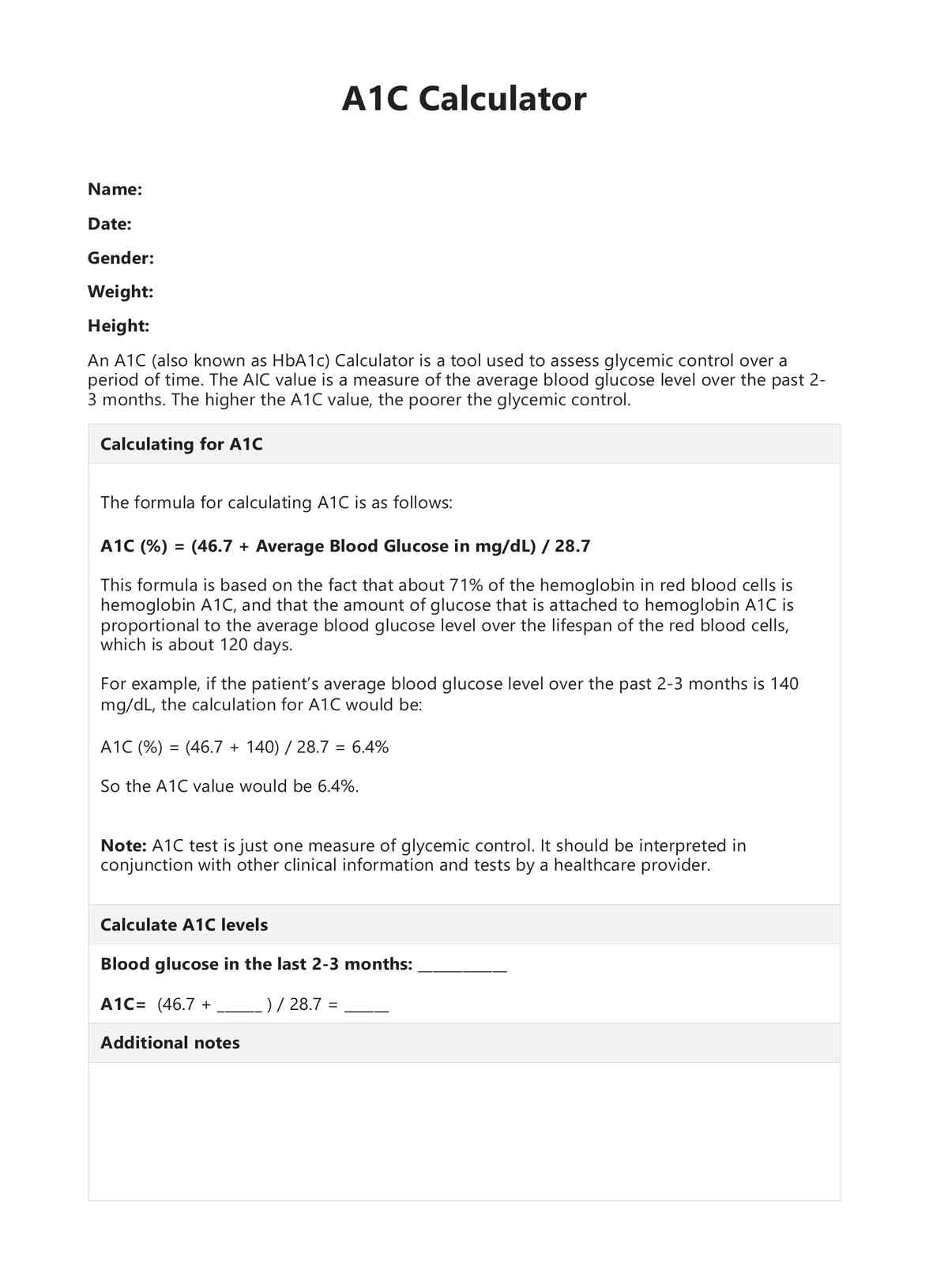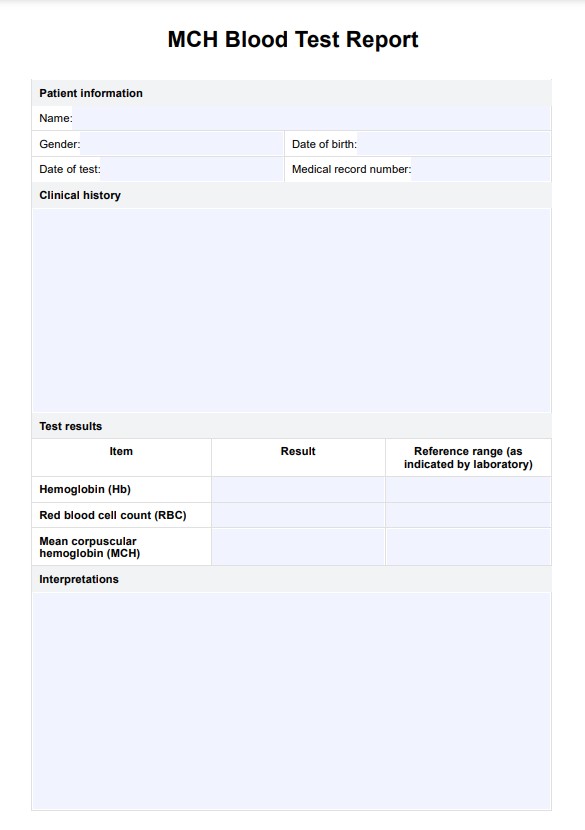Sleeping Heart Rate Variability
Use our template to track your patient's sleeping heart rate variability and gain insight into their heart health.


What is a Sleeping Heart Rate Variability Chart?
A Sleeping Heart Rate Variability Chart is valuable for assessing sleep quality and identifying potential health concerns. Heart rate variability (HRV) measures the variation in time between each heartbeat (Campos, 2017). A higher HRV indicates a more relaxed and adaptable heart, which reflects good autonomic nervous system balance. A lower HRV suggests a more stressed and less flexible heart.
During sleep, a person's HRV typically follows a pattern, with lower HRV in lighter sleep and higher HRV in deeper stages of sleep (Vanoli et al., 1995). This pattern reflects the balance between the sympathetic nervous system and other bodily systems, such as the parasympathetic nervous system. Tracking sleeping HRV can provide insights into overall sleep quality and help identify potential health concerns, such as obstructive sleep apnea, insomnia, or other sleep disorders.
There are many factors affecting HRV measurements, including sleep duration, stress levels, and demographic and psychological variables. Other key influencers include sleep efficiency, heart disease, and lifestyle habits like a healthy diet. Consistently low HRV trends may indicate chronic stress or underlying cardiovascular issues, while higher HRV during sleep reflects a healthy and balanced autonomic system.
Comparing a patient's average heart rate variability to the average HRV of their age group can give you a general idea of how their HRV is doing.
Sleeping Heart Rate Variability Template
Sleeping Heart Rate Variability Example
How to use our Sleeping HRV Chart template
Our template includes three tables of normative HRV data from different studies, including measurements of HRV during different sleep stages. While this data is useful for comparison, there is no universal standard, as HRV varies significantly among individuals. The template also provides a table for recording HRV values. Follow these steps to use our template:
Step 1: Access the template
Open the template by clicking "Use Template" to customize it on the Carepatron app, or click "Download" to save a non-editable version. This template helps track HRV data across different sleep stages.
Step 2: Measure HRV
HRV can be measured using sleep trackers, heart rate monitors, or fitness trackers. These devices may use different units, such as milliseconds (ms) or frequency domains like LF/HF ratio. Devices like ECG or PPG can also be used in clinical settings.
Step 3: Record HRV data
Use the provided table to document HRV values collected from sleep measurements. Make sure to note which unit of measure is being used, as HRV values can vary depending on the method of measurement.
Step 4: Analyze the results
Compare the recorded HRV values with the normative data from the chart. Consistently high or low HRV readings can indicate the need for further medical evaluation, especially in the context of poor sleep quality, mental health concerns, or high blood pressure.
Step 5: Discuss results with the patient
After analyzing the HRV data, communicate the results with the patient. Educate them on potential factors influencing their HRV and how lifestyle changes like a healthy diet or adjusting sleep medication can impact their sleep quality.
Consider using additional templates such as the Heart Rate Variability Chart and Sleep Diary to further enhance sleep health monitoring. These tools can provide a comprehensive view of your patient's sleep patterns and help identify areas for improvement.
When would you use this chart?
A Sleeping Heart Rate Variability Chart is valuable for assessing sleep quality and identifying potential health concerns. Some specific times when this chart would be of use include:
- Tracking sleep quality over time as the chart allows you to track your HRV patterns over time, enabling you to monitor changes in your sleep quality. This can be particularly beneficial if you are making lifestyle changes or using medication to try to help sleep disorders.
- Identifying potential sleep disorders as consistent irregularities in your HRV patterns, such as persistently low HRV during sleep, may indicate underlying sleep disorders like sleep apnea or insomnia. In this case, it can be beneficial to contact a healthcare professional to interpret your HRV data so that appropriate action can be taken.
- Assessing cardiovascular health is essential because tracking your HRV can give you insights into your heart's adaptability and identify potential cardiovascular risks.
- Use this chart to monitor sleep progress with interventions. For example, if you are implementing interventions to improve your sleep, such as cognitive behavioral therapy for insomnia (CBT-I) or changes in your sleep environment, tracking your HRV can help you assess the effectiveness of these measures.
What do the values mean?
The template includes data from studies that examine HRV values based on age, gender, sleep stages, and health status. It also provides fields for entering HRV data, allowing you to track and analyze trends and patterns over time. By comparing the patient’s HRV data to normative values, you can assess heart health and autonomic nervous system balance.
- High HRV throughout sleep stages: While generally positive, consistently high HRV during all sleep stages might indicate insufficient deep, restorative sleep, potentially leading to daytime fatigue or cognitive decline.
- Low HRV throughout sleep stages: This may point to health conditions like sleep apnea or insomnia. Sleep apnea, in particular, is associated with reduced HRV due to frequent interruptions in breathing.
- HRV variation across sleep stages: Healthy sleep patterns involve HRV fluctuation—lower HRV during deep sleep and higher HRV during lighter stages. Normal variation indicates balanced autonomic activity during sleep.
- Irregular HRV patterns: Spikes or sudden dips in HRV could signal sleep disturbances or underlying health issues. Persistent irregularities should prompt further medical evaluation.
- Long-term HRV trends: Monitoring HRV over time can reveal sleep health trends. A declining HRV may suggest worsening sleep quality, while rising HRV trends indicate improvements.
Keep in mind that HRV can vary widely between individuals, and factors like sleep disorders, stress, and underlying health conditions may influence the results.
References
Campos, M. (2017, November 22). Heart rate variability: A new way to track well-being (H. E. LeWine, Ed.). Harvard Health Blog; Harvard Health Publishing. https://www.health.harvard.edu/blog/heart-rate-variability-new-way-track-well-2017112212789
Vanoli, E., Adamson, P. B., Ba-Lin, Pinna, G. D., Lazzara, R., & Orr, W. C. (1995). Heart rate variability during specific sleep stages. Circulation, 91(7), 1918–1922. https://doi.org/10.1161/01.cir.91.7.1918
Commonly asked questions
A good HRV range during sleep varies, but in general, a higher HRV indicates better sleep quality and overall health. The HRV range for each sleep stage can differ based on individual factors such as age and health status.
Healthy HRV scores vary by age. For example, younger adults typically have higher HRV compared to older adults. Using age-specific HRV ranges, such as those in our chart, can provide insight into whether your HRV is within a healthy range.
Low HRV might be a sign of stress, poor cardiovascular health, or sleep disturbances. While a single low HRV reading isn’t always cause for concern, consistently low HRV may warrant further investigation by a healthcare professional.


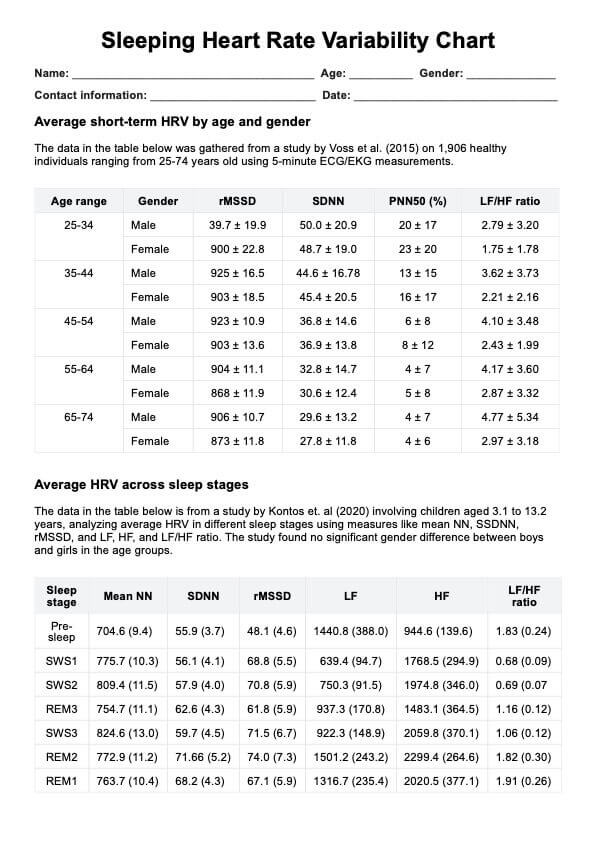
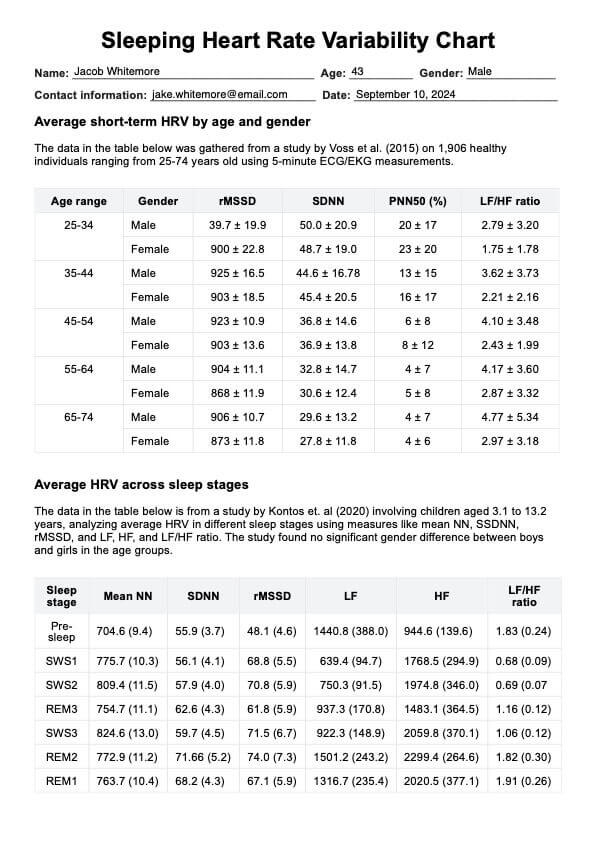

-chart.jpg)



































































































